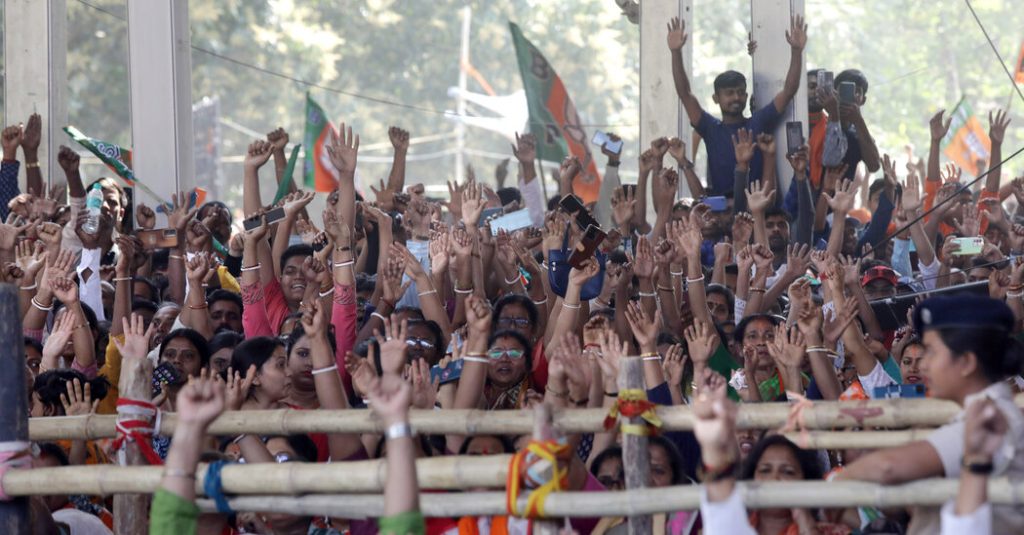The upcoming general election in India, which began on Friday and will continue until June 1, has garnered significant attention as it will determine the political direction of the country for the next five years. Prime Minister Narendra Modi, seeking a third term, has focused on addressing issues such as infrastructure development and access to basic necessities like clean water and toilets. However, his push for a Hindu-first nation has sparked controversy and heightened religious and ethnic tensions in the diverse nation. Despite concerns about efforts to centralize power and unfair advantages for the ruling party, India has maintained a nearly undisrupted electoral democracy for over 75 years.
India follows a parliamentary system of governance, with the party or coalition that holds a majority of the 543 seats in the lower house of Parliament forming the government and appointing the prime minister. The country boasts over 960 million eligible voters, with a high turnout of 67 percent recorded in the previous parliamentary election. The elections are conducted electronically across more than a million polling stations, utilizing around 15 million employees to ensure smooth balloting. With political parties spending billions of dollars on campaigning, money plays a significant role in the electoral process.
In the current election, Mr. Modi’s Bharatiya Janata Party (B.J.P.) holds a strong majority in Parliament, having won 303 seats in 2019. The B.J.P. is well-positioned to return to power, supported by a robust election machinery and vast financial resources. Despite attempts by the opposition parties to unite against Mr. Modi, they have struggled to present a cohesive ideological alternative beyond criticism of his policies. The Indian National Congress, the main opposition party, has seen a decline in its electoral performance in recent years, winning just 52 seats in 2019.
The results of the election will be announced on June 4, following the completion of voting in seven phases across different regions of India. The scheduling of phases takes into account factors such as climate variations, cultural festivals, and religious considerations to ensure a smooth and inclusive voting process. As Indian democracy navigates through these elections, the outcome will not only shape the country’s political landscape for the next five years but also have far-reaching implications for the region and the world. The democratic exercise in India, despite its challenges and controversies, continues to uphold the values of free and fair elections with results that are generally accepted by candidates and citizens alike.














